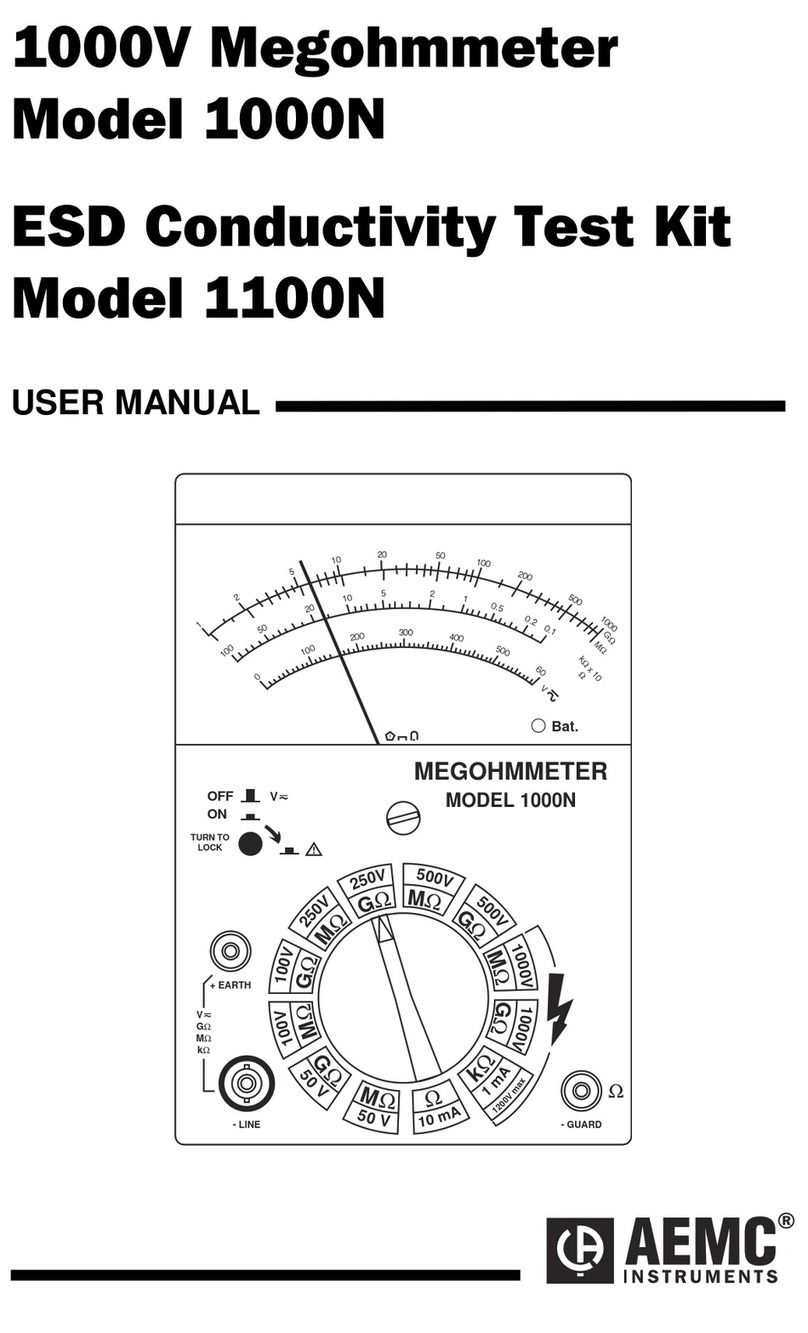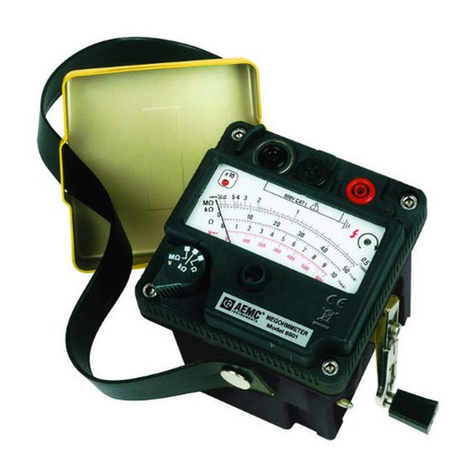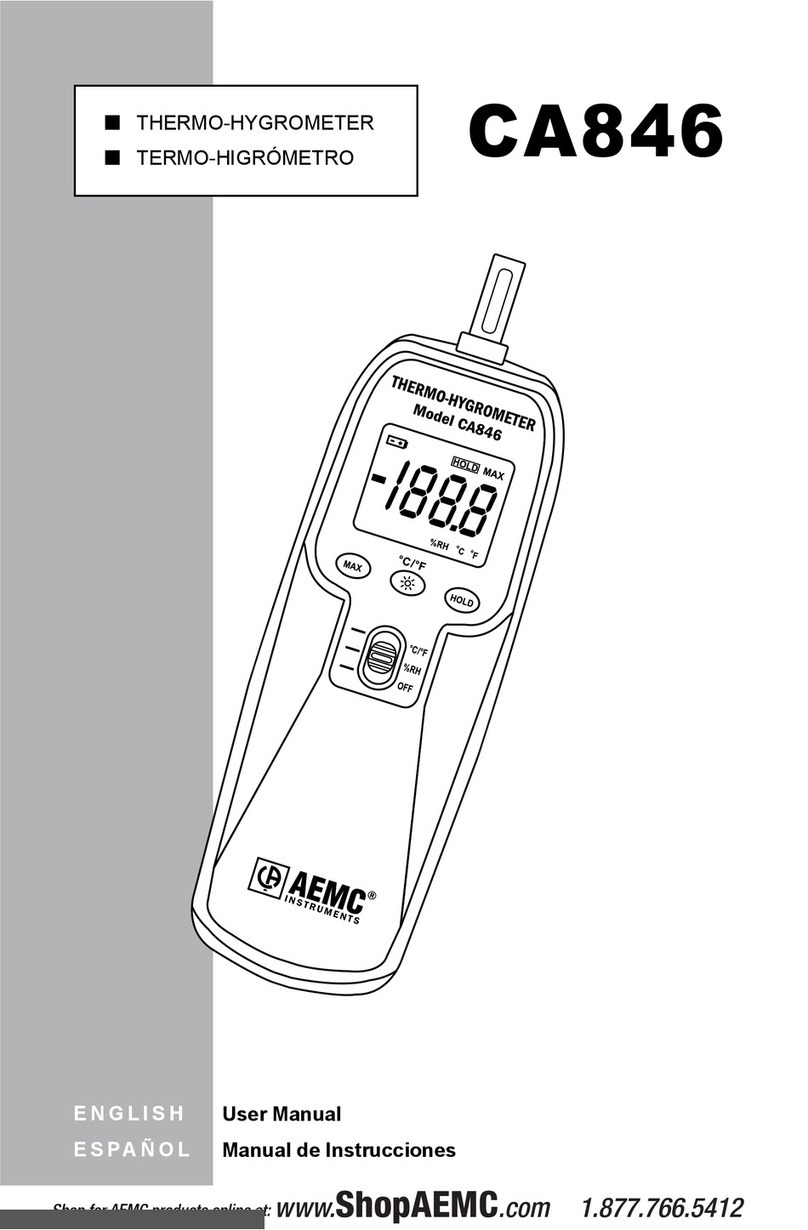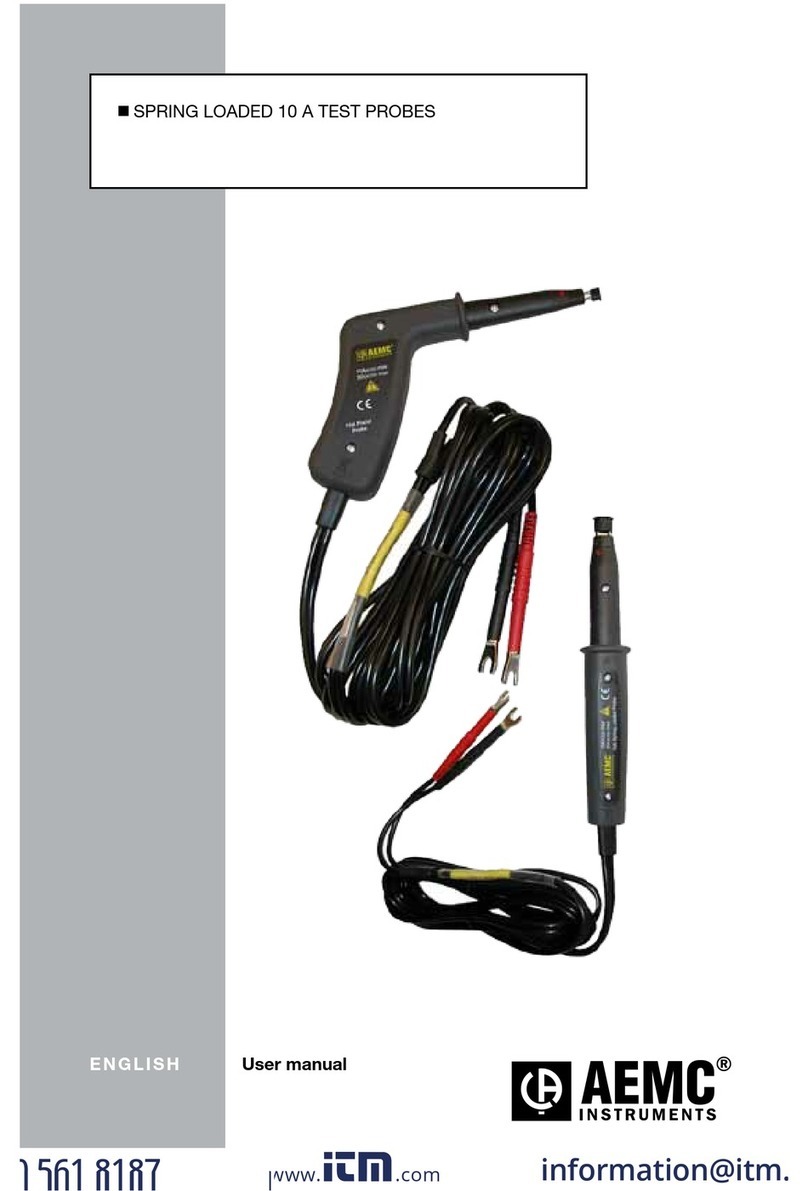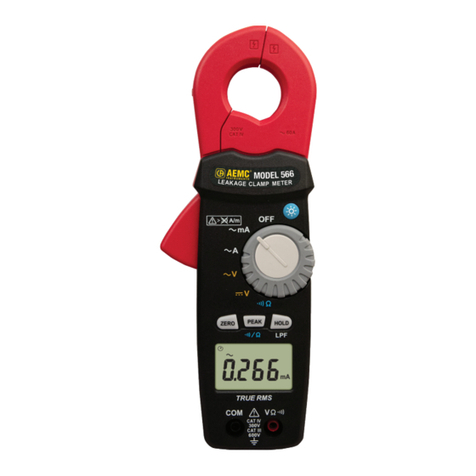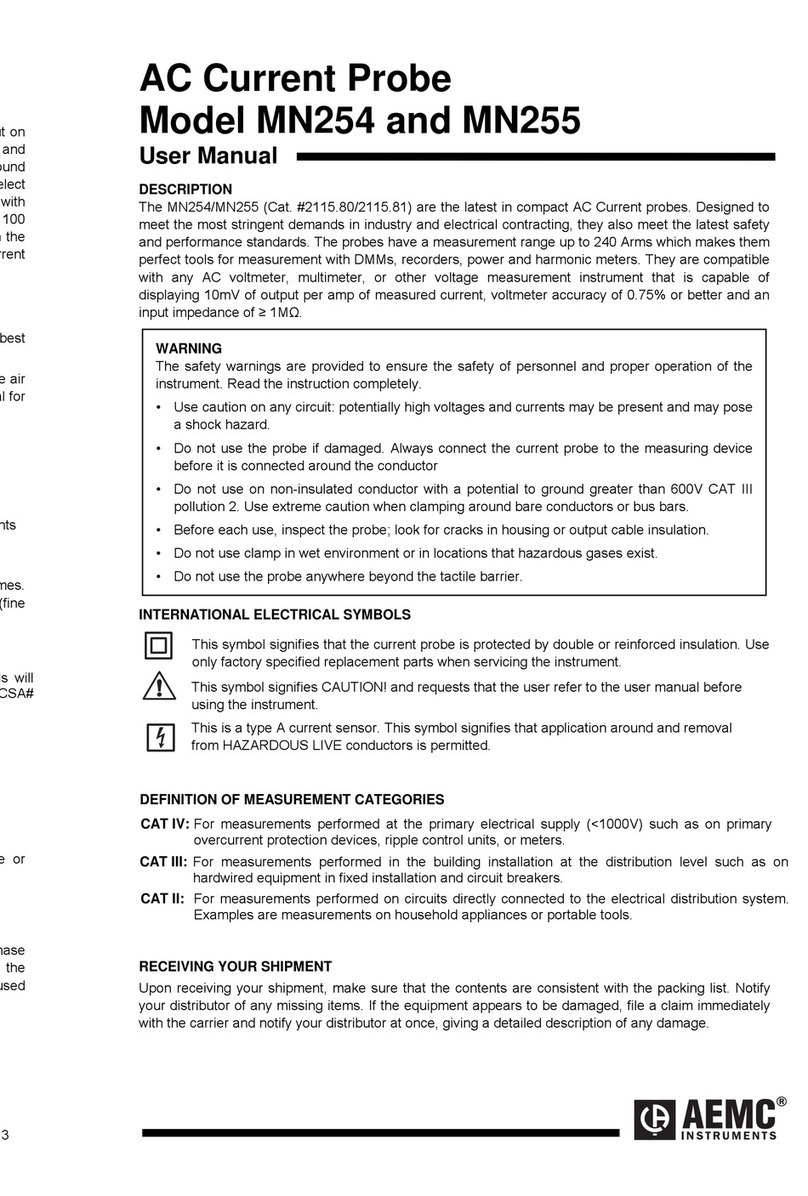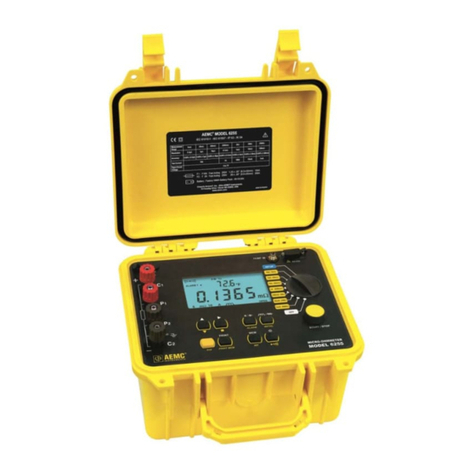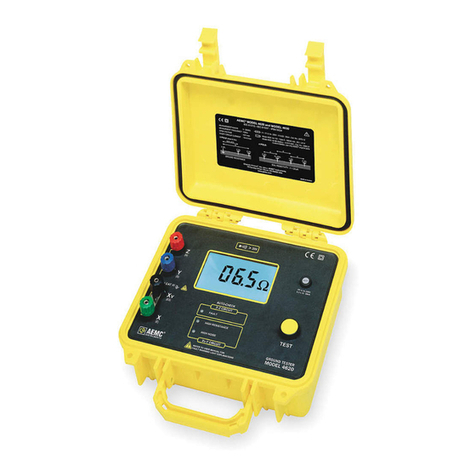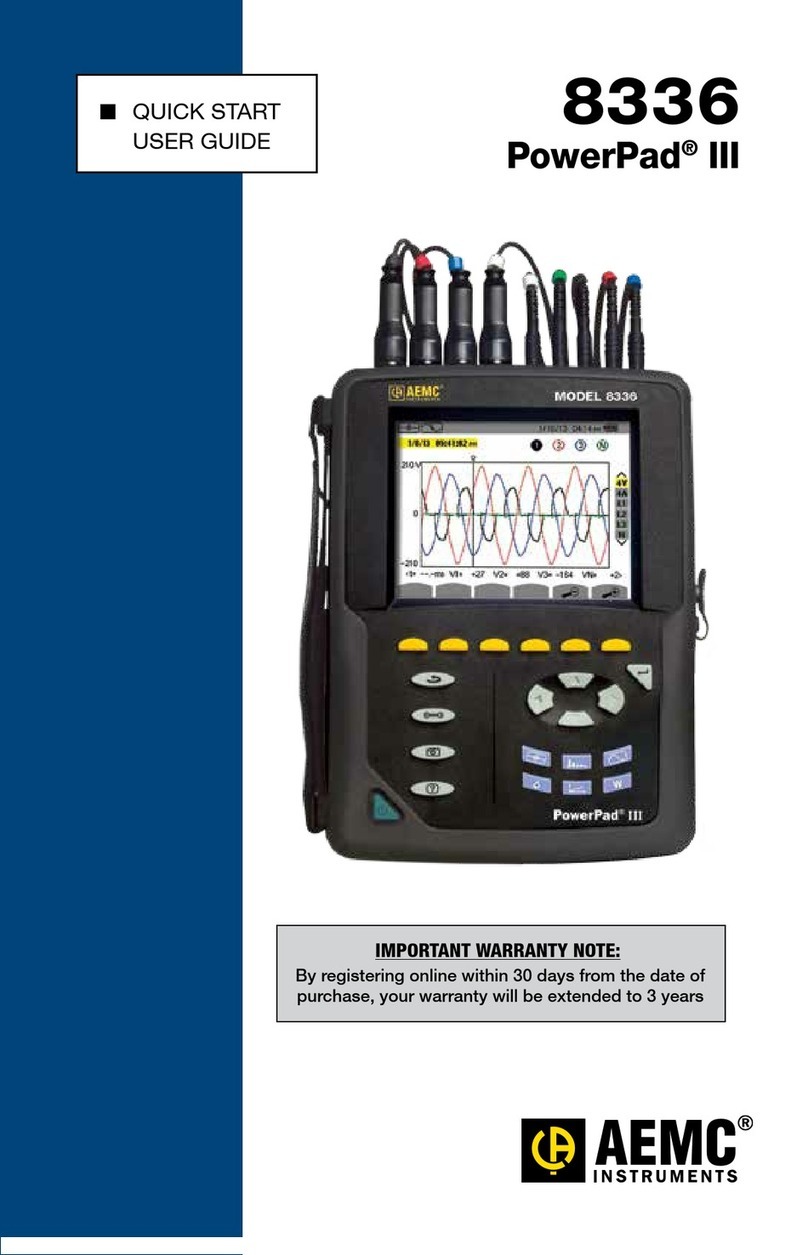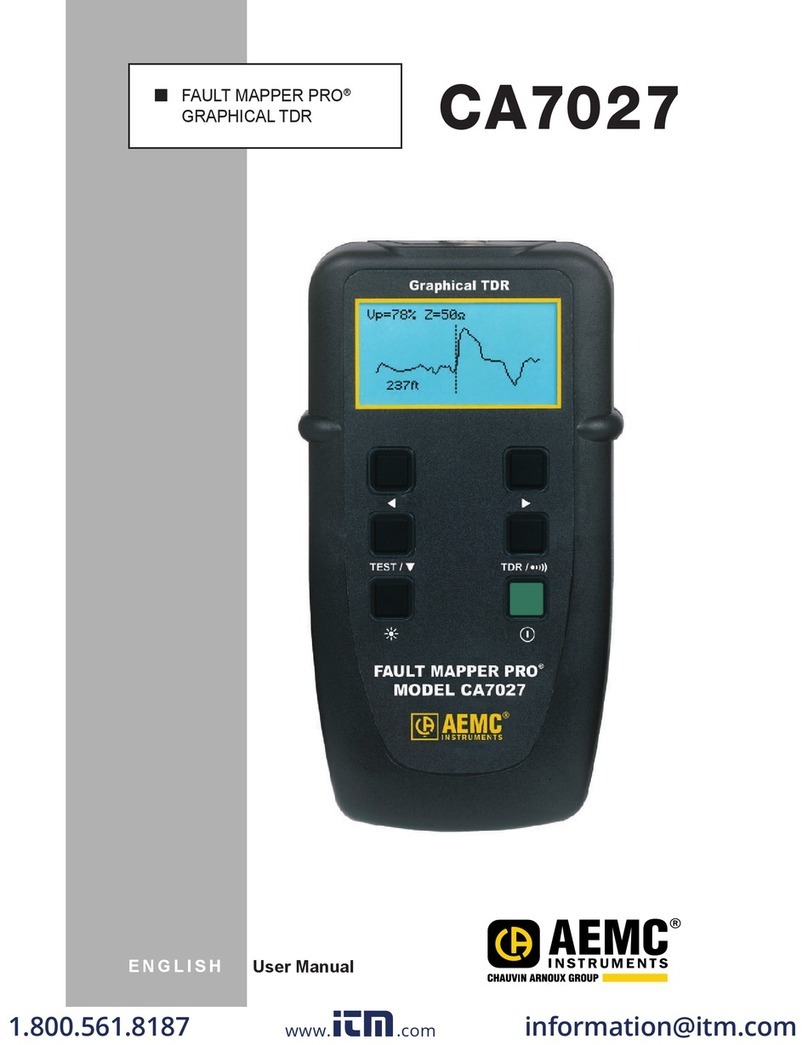
MODEL 1000N REPAIR AND CALIBRATION MANUAL CAT. #185.100
6
REV. 7: March 13, 2004
FILE LOCATION: Manuals - Cal. Man - 1000MAN.DOC
4/21/2005
SPECIFICATIONS:
ELECTRICAL
INSULATION TESTS
DC TEST VOLTAGE: 50, 100, 250, 500, 1000 V
MEGOHM RANGE:
For each test voltage two direct reading ranges
1 to 1000 MΩ
1 to 1000 GΩ(1,000,000 MΩ)
SHORT CIRCUIT CURRENT: 5 mA (max)
ACCURACY: 5% of reading typical
15 % of reading between 100 MΩto 1000 GΩon the
50V range
CHARGING TIME: 1000 MΩrange: 0.3 s/µF
1000 GΩrange: 4 s/µF
DISCHARGE TIME:
Automatic discharge when test button is released; 0.1
s/µF
SCALE:
Two large overlapping scales: 4.7" (119 mm) for each
range
TEST VOLTAGE GENERATION:
Solid state circuitry generating rated test voltage
across the full range
RESISTANCE TESTS
TEST CIRCUIT: Constant 1 mA DC
KILOHM RANGE: 1 to 1000 kΩ
MAXIMUM TEST VOLTAGE: 1200 V DC
ACCURACY: 5% ± 100Ωof reading typical
CONTINUITY TESTS
TEST CURRENT: Constant 10 mA DC
OHM RANGE: 0.1 to 100Ω(3Ωmidscale)
ACCURACY: 5% ± 0.05 Ωof reading typical
FUSE PROTECTION: 0.3 A high interrupting capacity
fuse
VOLTAGE TESTS (SAFETY CHECK)
VOLTAGE RANGE: 0 to 600 V DC
ACCURACY: 3% of full scale
GENERAL SPECIFICATIONS
AUDIBLE TEST SIGNAL: Ten beeps per minute for
insulation and resistance tests; continuous tone for
continuity test reading ≤200Ω
POWER SUPPLY: Eight 1.5 V "AA" alkaline batteries
(NEDA 15A). Typical battery life: 350 one-minute
tests; power consumed only when test button is
depressed; built-in battery check by green LED.
OPTION: 110/220 V selectable, 47 to 400 Hz AC
supply module
DIELETRIC TEST: 4000 V AC, 60 Hz, 1 min
METER MOVEMENT: Rugged taut band suspension
DIMENSIONS: 7.7 X 5.2 X 3.75" (196 X 132 X 95 mm)
WEIGHT: 2.2 lbs (1 kg)
TEMPERATURE RANGE: 23 to 122°F (-5 to 50°C)
CASE: High impact gray polycarbonate
TERMINALS:
Color-coded safety terminals; guard terminals
eliminates surface leakage errors
SAFETY/REFERENCE STANDARDS












